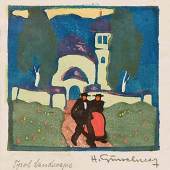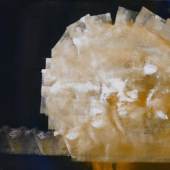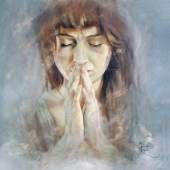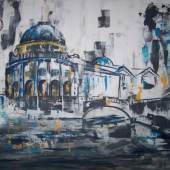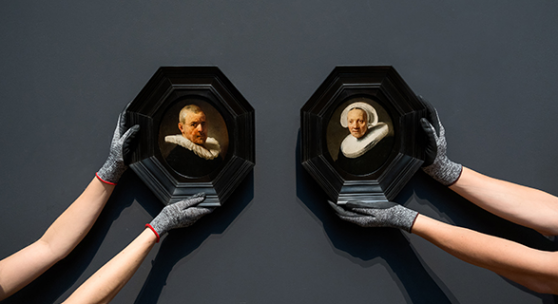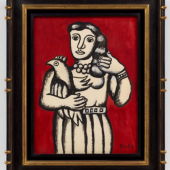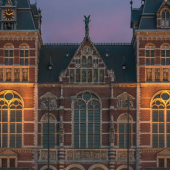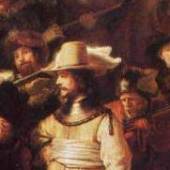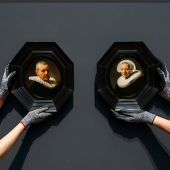Rijksmuseum Amsterdam
Rediscovered Rembrandt portraits on long-term loan to the Rijksmuseum
-
Ausstellung13.12.2023 - 13.01.2025
The Rijksmuseum has rediscovered two small portraits by Rembrandt. The 1635 portraits of Jan Willemsz van der Pluym and Jaapgen Caerlsdr. disappeared from view for almost two centuries, before resurfacing two years ago. After in-depth research, the Rijksmuseum has established the identities of the sitters and further substantiated their attribution to Rembrandt. The paintings are significant not only because they are the smallest formal portraits Rembrandt ever made, but also because Jan and Jaapgen were members of the artist’s family circle. The pair was purchased by the Holterman family earlier this year and are being given on long-term loan to the Rijksmuseum. They will be exhibited from 13 December 2023.
The Rijksmuseum has the largest and most representative collection of Rembrandt paintings in the world. Given my close relationship with the museum and the fact that the team of experts has been conducting research into these portraits over a period of years, I feel that these works belong in the museum.
- Henry Holterman
Who are the sitters?
Two large versions of the small oval portraits have been known for some time. In 1977, Isabel van Eeghen, archivist for the city of Amsterdam, identified the sitters in these works as Jan and Jaapgen based on their presence in a 1760 auction catalogue. Jan Willemsz van der Pluym was a wealthy slater and plumber in Leiden who in 1591 married Jaapgen Caerlsdr. The children of their great-great-grandson Marten ten Hove were one of the two owners of the paintings auctioned in 1760. The possibility that the couple in the question might be Jan and Jaapgen was based on the ages inscribed on the panels (the man was 69, the woman, 70). Given that Jan and Jaapgen married in 1591, they could very well have had these respective ages in 1635. This identification was speculative, and for several reasons experts excluded the larger versions from Rembrandt’s oeuvre. The re-emergence of the small oval portraits and new research conducted by the Rijksmuseum, however, led to the conclusion that the sitters are indeed Jan and Jaapgen, and that Rembrandt painted the ovals.
Archival and provenance research
Provenance research carried out by the Rijksmuseum revealed that the small oval portraits were sold at the same auction in 1760 as the larger copies. Generally speaking, collectors – or 18th-century collectors, in any case – were not interested in acquiring multiple portraits of the same sitters, particularly not of an elderly couple. In all likelihood, therefore the owner who sold the four portraits in 1760 was related to the portrayed couple, which indeed turned out to be the case. Additional archival research determined in which years the sitters were born: Jaapgen was born in 1565, and was therefore 70 years of age, and Jan in 1555 or 1556, and was 69 – exactly as stated on the paintings themselves. This means we can now conclusively state that the sitters are indeed Jan and Jaapgen.
By Rembrandt’s hand
Rembrandt was the most sought-after portraitist in Amsterdam at the time he painted the oval portraits. Considering their small size and dynamic, sketchy style, he probably painted them as a favour to the couple. The van der Pluyms had a close bond with Rembrandt’s family, which began in 1624 when Jan and Jaapgen’s son Dominicus wed Rembrandt’s cousin Cornelia Cornelisdr van Suytbroek. Suspicions that the portraits were by Rembrandt’s hand were confirmed after extensive technical research conducted by the Rijksmuseum using X-radiography, infrared photography, infrared reflectography, macro X-ray fluorescence (MA-XRF), stereomicroscopy and paint sample analysis. When taken together the various research results amount to compelling evidence. First of all, the bold and vigorous style used to render these portraits corresponds with Rembrandt’s rapid execution of other portraits and tronies from 1634 onwards. Similarly, the manner in which changes were made during the painting process is also consistent with other paintings by the artist. These alterations are visible in both collars and Jaapgen’s cap. Examination with a stereomicroscope revealed that the portraits were built up in a similar manner to other portraits painted by Rembrandt in this period. Moreover, the pigments match those frequently used by Rembrandt, including lead white, lead-tin yellow, bone- or ivory black, various earth pigments, vermilion and red lake. The same brown, iron-containing paint was used for both inscriptions, along with the signature and date on the portrait of Jan. The portraits also bear striking similarities regarding the buildup and composition of the paint compared to other portraits painted by Rembrandt in 1634 and 1635 – especially in the construction of the facial features and the loose brushwork.
The portraits will go on display on 13 December 2023 alongside other paintings by Rembrandt in gallery 2.8.
The Rijksmuseum is grateful for all the forms of support it receives. It is only through gifts and loans that we are able to show masterpieces such as these to the public.
-
31.10.2020 - 04.11.2020DIE ERSTE TEFAF ONLINE: PREMIERE DER DIGITALEN MESSE MIT JE EINEM MEISTERWERK PRO GALERIE (...
-
11.03.2023 - 19.03.2023TEFAF MAASTRICHT 2023: DIE TEILNEHMER DER NEUGESTALTETEN UND ERWEITERTEN SEKTION TEFAF SHOWCASE...
-
20.09.2024 - 22.09.2024Unseen Photo Fair, the international art fair dedicated to the latest developments in...
-
Das Rijksmuseum Amsterdam oder Rijksmuseum ist ein niederländisches Nationalmuseum am Museumplein...
-
1652 Rijksmuseum, Amsterdam Rembrandt "Die Nachtwache" 1642 Rembrandt...
-
13.12.2023 - 13.01.2025The Rijksmuseum has rediscovered two small portraits by Rembrandt. The 1635 portraits of Jan...
-
13.12.2023 - 13.01.2025
Tickets
The exhibition Vermeer runs from 10 February to 4 June at the Rijksmuseum.
Opening hours: Sunday – Wednesday 9am-6pm, Thursday - Saturday 9am-10pm. Start time required. Tickets can be purchased via the Rijksmuseum website Vermeer - Rijksmuseum
